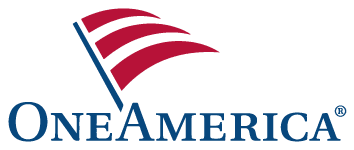Every year, as the calendar edges toward its final quarter, a familiar question arises for retirees and pre-retirees: Have I taken care of my Required Minimum Distributions (RMDs)? According to IRS rules, many retirement accounts—such as traditional IRAs and 401(k)s—generally require account holders to begin taking withdrawals by a certain age. These rules ensure that retirement savings, which have enjoyed years of tax-deferred growth, eventually flow back into taxable income.
But here’s the challenge: RMDs aren’t just about following the rules. They can influence your tax bracket, affect Medicare premiums, and shape how your retirement income feels year to year. With so much at stake, waiting until the last moment in December can feel more like scrambling than preparing. So, what does thoughtful preparation in Q4 look like?
Understanding the Timing
Q4 is the final window to satisfy your annual RMD requirement. Missing the deadline may trigger IRS penalties, so clarity on timing is important. Some retirees choose to spread withdrawals throughout the year, while others prefer to handle them in one lump sum before December 31. The fourth quarter becomes a checkpoint: if you haven’t yet taken your RMD, it’s time to finalize your approach.
Balancing Taxes and Cash Flow
RMDs increase your taxable income. Taking a large distribution all at once could potentially place you in a higher bracket or may affect how much of your Social Security benefit is taxable. On the other hand, spreading withdrawals into smaller, more manageable pieces might ease that impact. Thinking ahead in Q4 allows you to project your total income for the year and see how your RMD could fit into the bigger picture.
Coordinating with Other Retirement Income
RMDs don’t happen in isolation. They layer onto pensions, Social Security, investment income, or part-time work earnings. Preparing in the last quarter gives you a near-complete view of your annual income, making it easier to coordinate withdrawals strategically. For some, this is also the moment to revisit charitable giving options—since qualified charitable distributions (QCDs) may be used to satisfy RMDs and could help reduce taxable income.
Avoiding the Year-End Rush
Financial institutions often face a flood of RMD requests in December. Processing delays can be stressful if you’re cutting it close to the deadline. By addressing RMDs earlier in Q4, you reduce the risk of last-minute hiccups and give yourself more flexibility.
Wrapping Up
Preparing for RMDs in Q4 is less about a deadline and more about seeing the bigger picture: How will these distributions affect your taxes, your healthcare costs, and your long-term retirement strategy? The end of the year is a natural time to pause and ask: Am I managing my distributions in a way that supports both compliance and comfort?
If you’re approaching RMDs for the first time or simply want to double-check that your strategy makes sense, consider scheduling a complimentary meeting. Together, we can review your retirement income picture and help you finish the year feeling more prepared.
We are not affiliated with or endorsed by any government agency. Converting an employer plan account to a Roth IRA is a taxable event. Increased taxable income from the Roth IRA conversion may have several consequences including (but not limited to) a need for additional tax withholding or estimated tax payments, the loss of certain tax deductions and credits, and higher taxes on Social Security benefits and higher Medicare premiums. Be sure to consult with a qualified tax advisor before making any decisions regarding your IRA.







